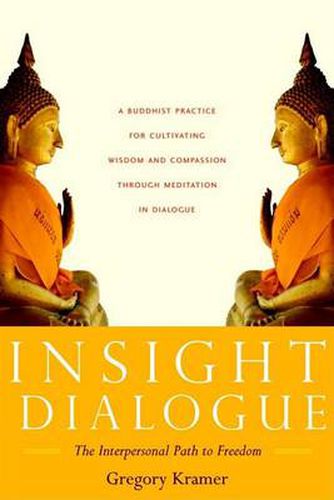Readings Newsletter
Become a Readings Member to make your shopping experience even easier.
Sign in or sign up for free!
You’re not far away from qualifying for FREE standard shipping within Australia
You’ve qualified for FREE standard shipping within Australia
The cart is loading…






Insight Dialogue is a way of bringing the tranquility and\ninsight attained in meditation directly into your interactions with\nother people. It’s a practice that involves interacting with a\npartner in a retreat setting or on your own, as a way of accessing\na profound kind of insight. Then, you take that insight on into the\ngrind of everyday human interactions. Gregory Kramer has been\nteaching the practice (which he originated) for more than a decade\nin retreats around the world. It’s something strikingly new in the\nworld of Buddhist practice—yet it’s completely grounded in\ntraditional Buddhist teaching.
\n
Kramer begins with a detailed presentation of the central\nBuddhist teaching of the Four Noble Truths seen through an\ninterpersonal lens. Because dukkha (suffering or\nunsatisfactoriness) is often most forcefully felt in our relations\nwith others, interpersonal relationships are a wonderfully useful\nplace to practice. He breaks the Noble Truths down into component\nparts to observe how they manifest particularly in relationship to\nothers, using examples from his own life and practice, as well as\nfrom his students’. He then goes on to present the practice as it’s\ntaught in his workshops and retreats. There are a few basic steps\nto the practice, deceptively simple to describe: (1) pause, (2)\nrelax, (3) open, (4) trust emergence, (5) listen deeply, and (6)\nspeak the truth.
\n
The sequence begins following a period of meditation, and\nincludes periods of speaking, listening, and mutual silence. Kramer\nincludes numerous examples of people’s experience with the practice\nfrom his retreats, and shows how the insight gained from the\ntechniques can be brought into real life. More than just\ntestimonials for how well the practice “works,” the personal\nstories demonstrate the problems that arise, the different routes\nthe practice can follow, and the sometimes surprising insights that\nare gained.
\n\n
$9.00 standard shipping within Australia
FREE standard shipping within Australia for orders over $100.00
Express & International shipping calculated at checkout
Insight Dialogue is a way of bringing the tranquility and\ninsight attained in meditation directly into your interactions with\nother people. It’s a practice that involves interacting with a\npartner in a retreat setting or on your own, as a way of accessing\na profound kind of insight. Then, you take that insight on into the\ngrind of everyday human interactions. Gregory Kramer has been\nteaching the practice (which he originated) for more than a decade\nin retreats around the world. It’s something strikingly new in the\nworld of Buddhist practice—yet it’s completely grounded in\ntraditional Buddhist teaching.
\n
Kramer begins with a detailed presentation of the central\nBuddhist teaching of the Four Noble Truths seen through an\ninterpersonal lens. Because dukkha (suffering or\nunsatisfactoriness) is often most forcefully felt in our relations\nwith others, interpersonal relationships are a wonderfully useful\nplace to practice. He breaks the Noble Truths down into component\nparts to observe how they manifest particularly in relationship to\nothers, using examples from his own life and practice, as well as\nfrom his students’. He then goes on to present the practice as it’s\ntaught in his workshops and retreats. There are a few basic steps\nto the practice, deceptively simple to describe: (1) pause, (2)\nrelax, (3) open, (4) trust emergence, (5) listen deeply, and (6)\nspeak the truth.
\n
The sequence begins following a period of meditation, and\nincludes periods of speaking, listening, and mutual silence. Kramer\nincludes numerous examples of people’s experience with the practice\nfrom his retreats, and shows how the insight gained from the\ntechniques can be brought into real life. More than just\ntestimonials for how well the practice “works,” the personal\nstories demonstrate the problems that arise, the different routes\nthe practice can follow, and the sometimes surprising insights that\nare gained.
\n\n